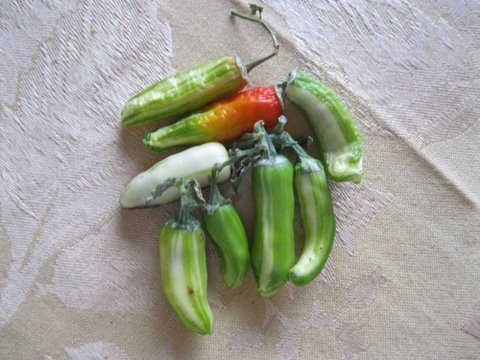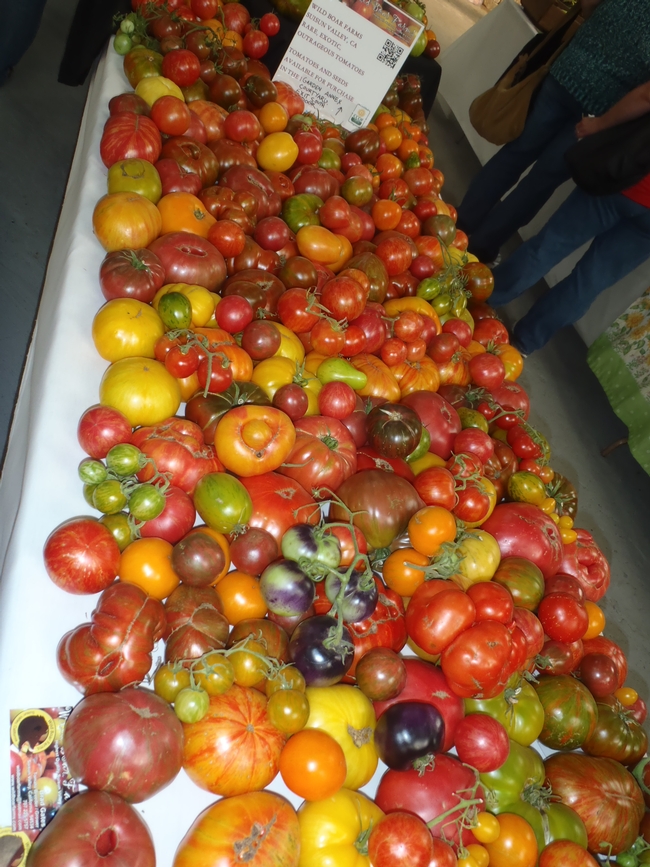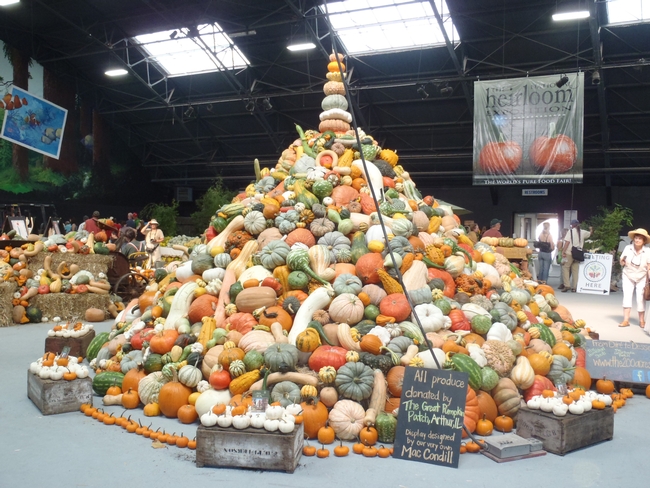Posts Tagged: heirloom
My Heirloom Garden
Heir·loom \’er-,lÜm\: 1: a piece of property that descends to the heir as an inseparable part of an inheritance of real property 2: something of special value handed on from one generation to another. 3: a horticultural variety that has survived for several generations usually due to the efforts of private individuals.
My dad, Bob, passed away about 2 years ago, and I always think about him this time of year especially, since it would’ve been his birthday last week, and I undoubtedly would’ve brought him some home-baked cookies and a plant or garden tool. Every spring, when I was younger we’d go to a garden shop and buy a pansy or petunia for me to take home and keep in my windowsill. Since I didn’t live with him, I think it was his way of saying he’s always around.
Every time I went to my dad’s house something new seemed to be sprouting or growing. He was especially good with roses. Always telling me that they’ll grow if I’d just stick ‘em in the ground. One day I’d go to visit and he’d have them all pruned back and I’d think how in the world will they ever come back?
But, sure enough, next visit there they’d be with buds, and the next visit with big full blooms smelling wonderful with that old-fashioned rose scent. I’d often comment on my way to the car, and sooner than I could turn around, he’d have a few buds snipped with the stems wrapped in a moist paper towel so they’d stay fresh until I got home.
In another shady corner next to his shed were violets (Viola odorata), that were just prolific! Their tiny purple blooms fill the air with a light scent that you would imagine in a fairyland somewhere. Eventually, they spread to be under some of the rose bushes along with a bit of fern. What a treat for the senses that always was!
And every early spring, I’d always forget that there were daffodils. Since we usually entered in his back door I would never notice them until I would decide to take my “walk around” to see what was happening in his yard. I’d walk out to the front porch and practically staring me in the face would be the tallest daffodils! Mind you his porch was about 2 ½ feet high off the ground! Those would have to be the strongest bulbs I’d ever see, since they really had to reach to get some of the sun. I think he planted them for his wife, Harriet, who had loved the color yellow.
We finally sold his house last year as much as we wanted to keep it, it was in a senior living area and we weren’t allowed to rent it out. My husband waited patiently on the last moving day as I “walked around” one more time breathing in each scent and trying to remember it forever.
Just last week, I was doing a “walk around” of my own house, when I noticed something growing in a bin. It was my dad’s “compost” bin. Just an old 15 gallon black planter’s tub that he used to throw his clippings in after pruning. I guess I’d forgotten. I’d dug up some of those daffodil bulbs and tossed them in hoping that I’d be able to get the same spectacular results that he had gained. But alas, I never planted them. Disappointed and figuring that they turned to compost themselves after a year of sitting, I passed by the tub day after day never having the heart to recycle it and had decided to use it for my own trimmings. What a surprise! Those bulbs had grown and bloomed in his bin and there they were! Rejoice! Two perfect daffodils (I think one for Dad and one for Harriet), right in the bin, right at my house, just like he was saying again that he’d always be around.

My Dad's Daffodils March 2012. (photo by Patti Brantley)
Heirloom Seeds
Happy New Year 2012 to everyone! The parties are over, the leftovers are gone, and the weather is a little gray. What is a gardener to do? Well, there are some very wonderful seed catalogs available to spark your imagination and help you plan for a new year. They may even offer you the opportunity to plan for a spring or summer vacation centered on gardening events.
Two new catalogs for me both offer heirloom and open-pollinated seeds. An open-pollinated (OP) variety is one that breeds true from seed, meaning the seed saved from the parent plant will grow offspring with the same characteristics. OP seed is produced by allowing the natural flow of pollen between different plants of the same variety. Heirloom varieties are OP varieties with a long history of being cultivated and saved within a family or group. They have evolved by natural or human selection over time.
A hybrid variety, on the other hand, does not breed true from seed. Hybrid seed is produced by crossing two different parent varieties of the same species. Hybrids do not remain true in generations after the initial cross and cannot be saved from generation to generation unchanged. So if you like to save seeds from your favorite flowers or super sweet tomatoes, this is good to know.
As I was looking through the beautiful pictures in Seed Savers Exchange and Baker Creek Heirloom Seeds, I noticed that Crane melons were in each catalog. These melons bring back memories of my childhood in Sonoma County. The melons were introduced in the 1920’s by Oliver Crane whose family farmed six generations near Santa Rosa, California. The melon is a pear-shaped Crenshaw-type fruit that grows 3-5 pounds. The yellow green skin is covered in dark freckles and is ready for picking when the freckles turn orange. The light orange flesh has a great sweet flavor and takes 75-85 days to produce. Perhaps they will ripen even faster under Solano sun.
To get copies of the Seed Savers Exchange catalog from Decorah, Iowa go to www.seedsavers.org. The Baker Creek Heirloom Seeds can be found at www.rareseeds.com. Although Baker Creek is based out of Mansfield, Missouri, there is a seed store in Petaluma, called the Seed Bank, originally the first Bank of America building in town. Both catalogs have calendars of garden events for 2012 and even some free webinars that don’t require travel.
Fish Pepper Fish
One of the most striking peppers out there is an African-American heirloom fish pepper, Capsicum annuum. Its variegated green and white leaves with green and yellow striped peppers really stand out in a vegetable garden. The color of the fruit ranges from green, orange, brown, white, and red (watch out for the heat on the red). Mildly hot in the green form, these peppers can be used in many dishes, especially fish and shellfish dishes.
The pepper came to America in the 1870s and was widely grown in the Philadelphia and Baltimore areas. It is a secret ingredient in fish recipes, not showing up in cookbooks, but known through oral tradition.
Easy to grow in containers as well as raised and ground gardens, this pepper needs full sun, water 2-3 times per week until established, and mature in 80 days. Because of its handsome display, the plant is valued by ornamental landscapers.
You can get seeds from Baker Creek Heirloom Seeds; I ordered starters from Redwood Barn in Davis; Morningsun Herb Farm might also be able to order them.
One of my favorite fish dishes is grilled salmon, especially if I caught the salmon in Sitka, Alaska.
Grilled Salmon with Fish Peppers
2 salmon fillets
2-3 Tbsp olive oil
1/8-1/4 cup white wine
juice from 1 lemon or 1 orange
minced garlic to taste
salt and pepper to taste
minced fish pepper to taste
Marinade fillets in all ingredients for about 3 hours. Grill for 5-7 minutes on side depending on how well done you like your salmon. Enjoy.
Heirloom Seeds
If you are a gardener, a history buff, someone who enjoys cooking, and/or cares about social causes, consider sowing some heirloom seeds (flowers, fruits and/or vegetables) the next time you do any planting.
Although there is no consensus on what an heirloom seed is, it is at a minimum, a plant whose seed is openly pollinated, or in the case of certain fruit trees, propagated through grafts and cuttings. Heirloom seeds are rich in history (frequently, the varieties date back at least 50 or more years, and sometimes, hundreds of years old), as they are often passed on by family and friends from one generation to the next, and often bear interesting names which offer insight into their fascinating history. Take for instance, the popular tomato that we know as 'Mortgage Lifter'. The story goes that during the 1940’s, an auto mechanic nicknamed “Radiator Charlie,” spent seven years breeding a tomato plant until he developed a sufficiently stable tomato plant which had all the traits and characteristics that he desired. Radiator Charlie, who was apparently, quite the marketer, sold his tomato seedlings for a $1.00 each (a small fortune in his day) and used the proceeds from those sales to pay off the mortgage on his house; hence, the name, 'Mortgage Lifter'.
Heirloom fruits and vegetables are difficult to find in supermarkets, as they tend to be delicate, have a shorter shelf-life than their commercial counterparts, and are not standardized in shape or size such that they can be packed and shipped over long distances. You may have better luck finding heirlooms at farmers markets. People who love to cook, swear by the texture, flavor, and appearance of heirloom vegetables and fruits, as no two vegetables or fruits of the same variety, look exactly alike.
Also, by growing heirlooms, and better yet, saving their seeds and passing them onto others, you help maintain genetic diversity and prevent the extinction of certain varieties of flowers, fruits and vegetables, which have been, and continue to, disappear at an alarming rate.
So as you peruse through your seed catalogs this winter while daydreaming of spring, consider giving heirlooms a try!




